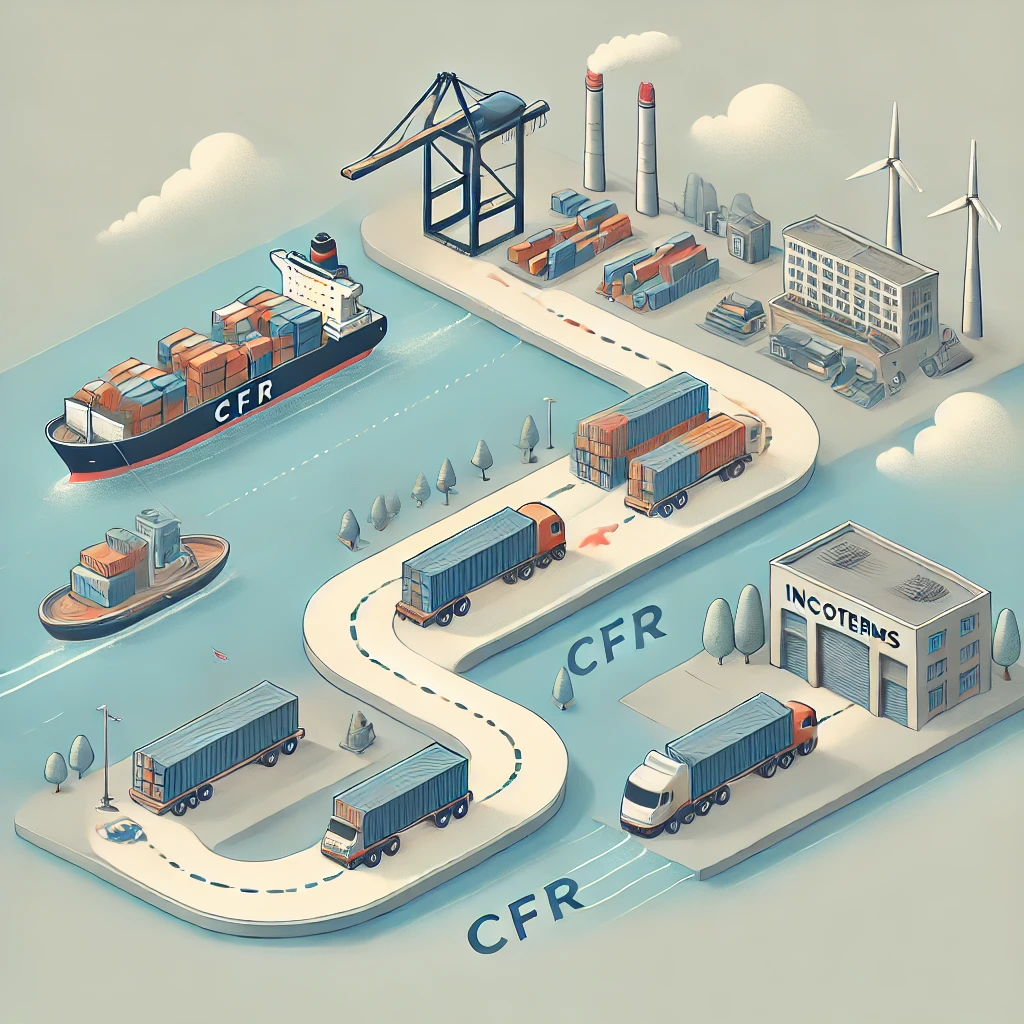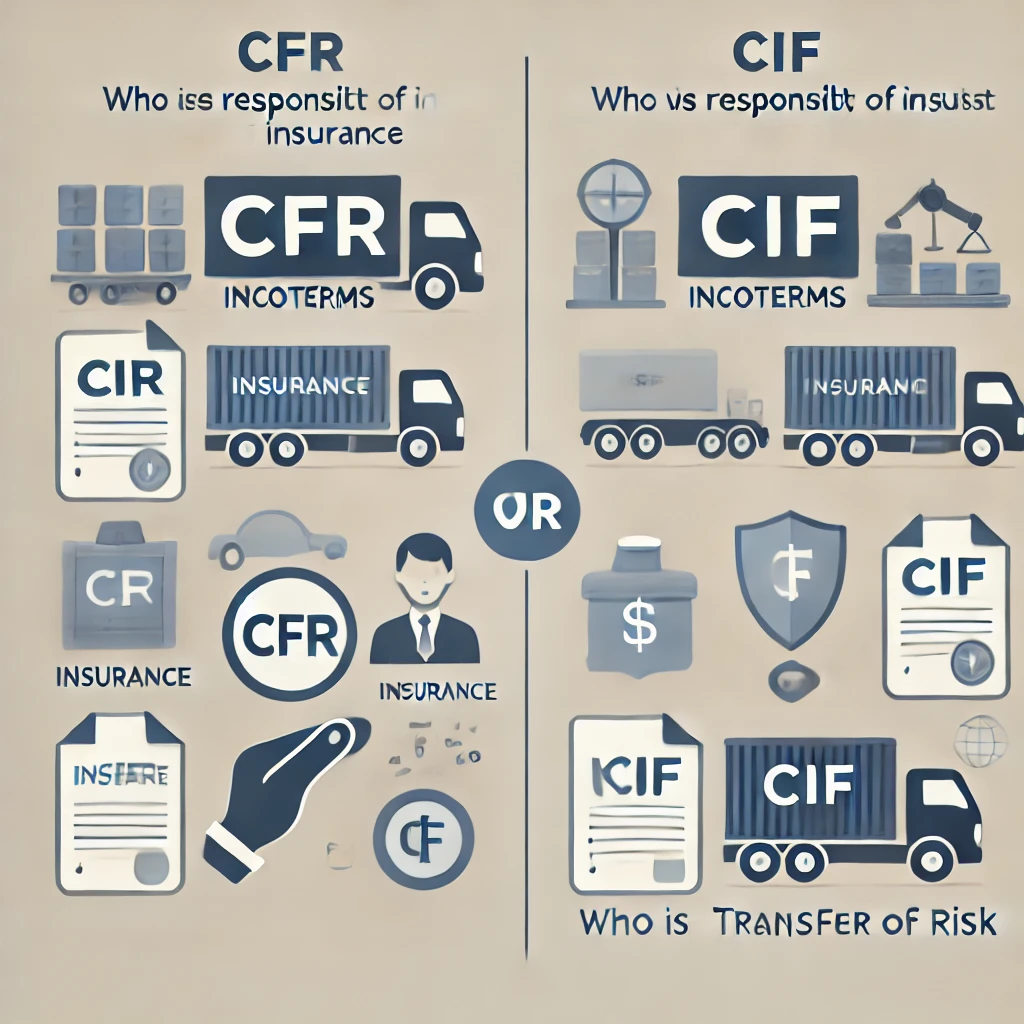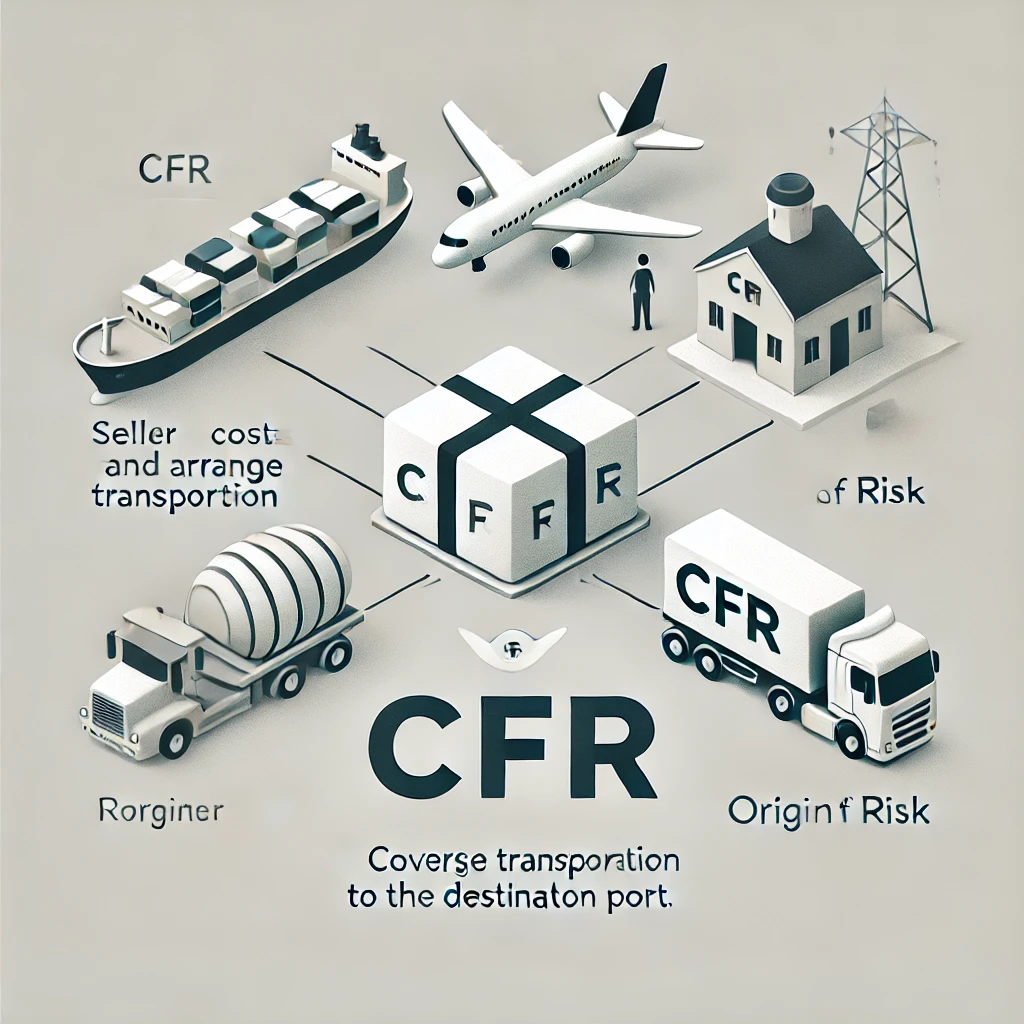Understanding CFR Incoterms: A Comprehensive Guide to Cost and Freight

What Are CFR Incoterms?
CFR Incoterms, or Cost and Freight, is one of the 11 Incoterms (International Commercial Terms) defined by the International Chamber of Commerce (ICC). These Incoterms are standardized rules that outline the responsibilities of buyers and sellers in international transactions.
When using CFR Incoterms, the seller is responsible for arranging and paying for the transportation of goods to a specified destination port. However, the risk of loss or damage to the goods transfers to the buyer once the goods are loaded onto the vessel at the port of origin.
Key Aspects of CFR Incoterms:
- Cost: The seller covers all costs up to the arrival of goods at the destination port.
- Freight: The seller arranges and pays for freight to the destination port.
- Risk Transfer: Risk transfers to the buyer once goods are loaded onto the vessel.
- Insurance: The buyer is responsible for insurance (unlike CIF terms).
CFR vs. Other Incoterms
To fully understand CFR Incoterms, it’s helpful to compare them with other similar terms:
CFR vs. CIF (Cost, Insurance, and Freight)
The main difference between CFR and CIF is insurance. In CFR, the buyer is responsible for insurance, while in CIF, the seller must provide insurance coverage.
CFR vs. FOB (Free on Board)
In FOB, the seller’s responsibility ends when the goods are loaded onto the vessel at the port of origin. In CFR, the seller’s responsibility extends to arranging and paying for freight to the destination port.
CFR vs. FCA (Free Carrier)
FCA requires the seller to deliver the goods to a carrier or another person nominated by the buyer at an agreed place. CFR involves the seller arranging sea freight to a specific destination port.
Advantages and Disadvantages of CFR Incoterms
Advantages:
- Clear division of costs: CFR Incoterms clearly define who pays for what in the shipping process.
- Seller controls shipping: The seller can choose the shipping company and negotiate rates.
- Simplified process for buyers: Buyers don’t need to arrange international shipping.
Disadvantages:
- Risk for buyers: Buyers bear the risk during transit without control over the shipping process.
- Limited to sea and inland waterway transport: CFR is not suitable for other modes of transportation.
- Potential for higher costs: Sellers may include a margin in their shipping arrangements.
When to Use CFR Incoterms
CFR Incoterms are most appropriate in the following scenarios:
- Sea and inland waterway transport: CFR is specifically designed for these modes of transportation.
- Containerized cargo: It’s commonly used for standard container shipments.
- When buyers prefer not to handle shipping logistics: CFR allows buyers to avoid the complexities of international shipping arrangements.
- Regular trade relationships: CFR works well for established trade partnerships where trust exists between parties.

CFR Incoterms: Seller's Responsibilities
Under CFR Incoterms, the seller has several key responsibilities:
- Goods provision: Supply goods that conform to the contract of sale.
- Packaging and marking: Properly package and mark the goods for shipping.
- Export clearance: Handle all export formalities and pay any export duties.
- Delivery to carrier: Deliver the goods to the carrier at the port of shipment.
- Freight arrangement: Book and pay for freight to the destination port.
- Proof of delivery: Provide the buyer with proof that the goods have been delivered on board the vessel.
CFR Incoterms: Buyer's Responsibilities
The buyer also has several responsibilities:
- Payment: Pay the price as provided in the contract of sale.
- Import clearance: Handle all import formalities and pay any import duties.
- Risk assumption: Bear all risks of loss or damage to the goods from the time they are loaded on the vessel at the port of shipment.
- Insurance: Arrange and pay for insurance if desired (not mandatory under CFR).
- Unloading: Pay for unloading costs at the destination port, unless included in the freight.
CFR Incoterms and Documentation
Proper documentation is crucial when using CFR Incoterms. Key documents include:
- Commercial Invoice: Details the goods being sold and the amount due.
- Bill of Lading: A document issued by the carrier confirming receipt of goods for shipment.
- Packing List: Itemizes the contents of each package in the shipment.
- Certificate of Origin: Certifies the country where the goods were manufactured.
Insurance Certificate: If the buyer chooses to insure the goods (optional under CFR).

CFR Incoterms: Risk Management
While CFR Incoterms define the transfer of risk, both parties should consider risk management strategies:
- Insurance: Although not required, buyers should strongly consider insuring the goods during transit.
- Clear contracts: Ensure all terms are clearly defined in the sales contract.
- Reputable carriers: Sellers should choose reliable shipping companies to minimize risk.
- Inspection: Buyers may want to arrange for pre-shipment inspection to verify the condition of goods.
CFR Incoterms in Practice: A Case Study
Let’s consider a practical example of CFR Incoterms in action:
Company A in China sells electronic components to Company B in the United States. They agree on CFR terms with the destination port being Los Angeles.
- Company A (seller) is responsible for:
- Manufacturing the components to specification
- Packaging the goods appropriately for sea transport
- Delivering the goods to the port in Shanghai
- Arranging and paying for shipping to Los Angeles
- Providing Company B with the necessary documentation
- Company B (buyer) is responsible for:
- Paying the agreed price for the goods
- Bearing the risk once the goods are loaded in Shanghai
- Arranging insurance (if desired)
- Handling import clearance in Los Angeles
- Unloading the goods at the Los Angeles port
This example illustrates how CFR Incoterms clearly define the responsibilities of each party, facilitating smooth international trade.

Common Misconceptions About CFR Incoterms
Despite their widespread use, there are some common misconceptions about CFR Incoterms:
- Insurance is included: Unlike CIF, insurance is not included in CFR terms.
- Risk transfer at destination: The risk actually transfers at the port of origin, not the destination.
- Applicable to all transport modes: CFR is specifically for sea and inland waterway transport.
- Seller responsible for unloading: Unless specifically agreed, unloading at the destination is the buyer’s responsibility.
Understanding these nuances is crucial for effectively using CFR Incoterms in international trade.
The Future of CFR Incoterms
As global trade evolves, so do Incoterms. The latest version of Incoterms, released in 2020, made some changes to various terms, though CFR remained largely unchanged. However, future revisions may adapt CFR to address:
- Digitalization: Increasing use of electronic documentation.
- Sustainability: Potential incorporation of environmental considerations.
- Security: Enhanced focus on supply chain security measures.
Staying informed about these potential changes is crucial for businesses engaged in international trade using CFR Incoterms.
Conclusion: Mastering CFR Incoterms
CFR Incoterms play a vital role in international trade, providing a clear framework for the responsibilities of buyers and sellers in sea and inland waterway shipments. By understanding the nuances of , businesses can navigate the complexities of global commerce more effectively.
Whether you’re new to international shipping or a seasoned trader, mastering is essential for success in today’s interconnected global marketplace. Remember, while offers many advantages, it’s crucial to consider your specific situation and consult with logistics experts to determine if CFR is the most appropriate for your transactions.
By leveraging the power, businesses can streamline their international shipping processes, clearly define responsibilities, and ultimately foster stronger, more efficient global trade relationships.
